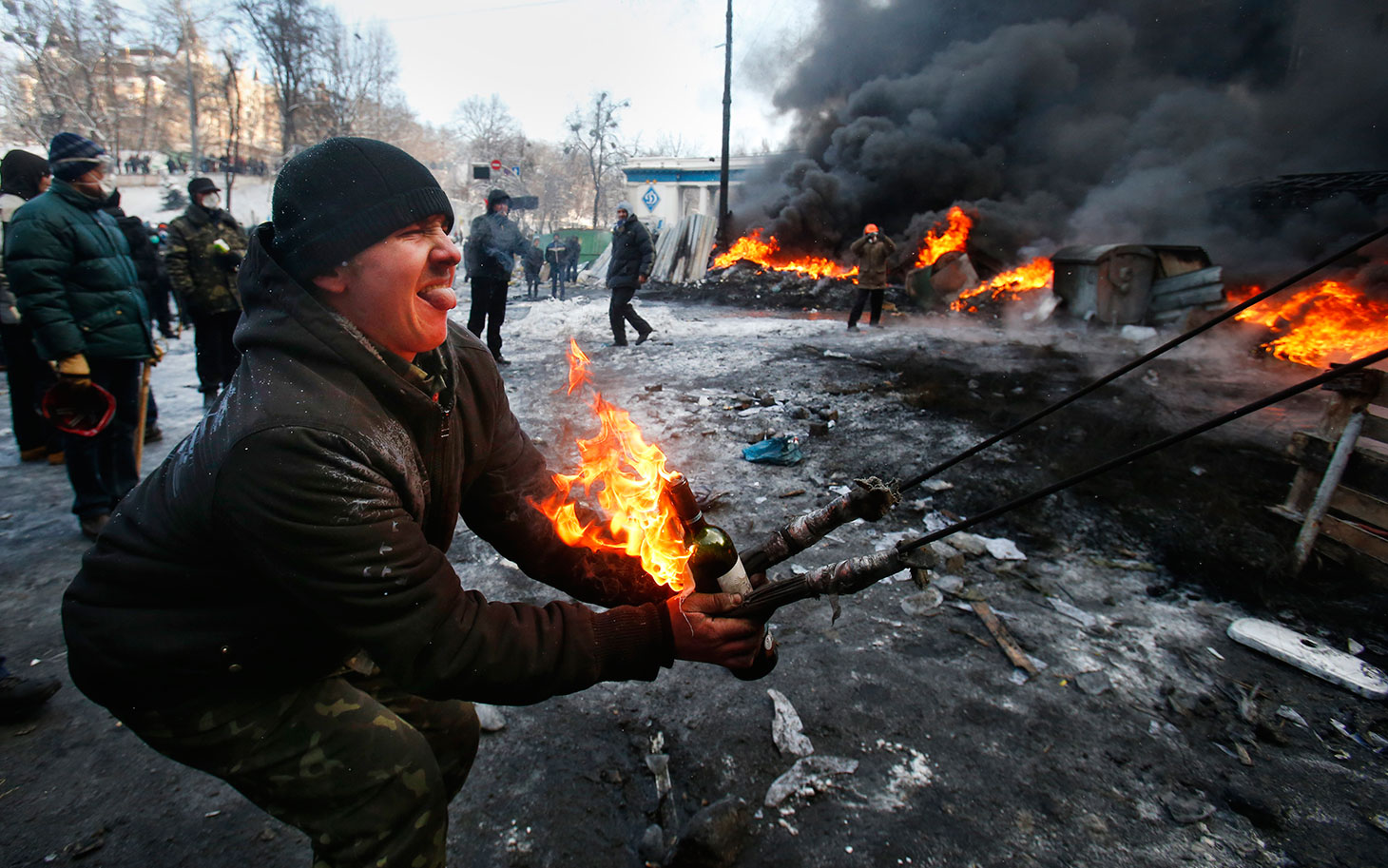
(Photo taken from america.aljazeera.com)
by Brad Cabana
Perhaps the better question is: Is Ukraine a nation-state? It has certainly grown since its inception as a tiny trading post in 1654, but, and this is key, as a Russian controlled entity. Between 1654 and 1917 the territory of Ukraine was added to by Russian tsars as a “province” of Russia. In 1917 it became a republic with the USSR – or essentially a larger Russian province. In 1922 Lenin granted Ukraine the territory now known as South and East Ukraine. In the 1950’s Khrushchev gave it Crimea. Bottom line, as a Russian entity known as “The Ukraine”, it grew exponentially from nothing to what its borders are today.
However, a nationalist movement centred in Kiev wanted independence from Russia, and made two attempts at it: in 1918 (crushed and divided by Russia and Poland in 1921); and successfully in 1991 (upon the collapse of the Soviet Union and 90% ratification via referendum). Viewed in these historic terms, “The Ukraine’s” transformation to “Ukraine” the country is a very recent development that remains out of step with its past. In fact, Ukraine’s current status is almost that of rogue province of Russia. While many will resent that phraseology, the evidence suggests it is accurate.
Take for instance Ukraine’s economy. Ukraine’s largest trading partner has always been Russia. Prior to the most recent conflict, Ukraine exported nearly 30% of its products to Russia, while Russia provided Ukraine with 32% of its imports. The closest trading partner to Ukraine after Russia was Germany, albeit 600% less than the Russian trade. Much of Ukraine’s debt is owed to Russia, and more recently the IMF and the EU. The recent break with Russia has created economic chaos in Ukraine. Its GDP annual growth rate has fallen dramatically from -1.2 in 2013 to a devastating -17.6 in the first quarter of 2015. Its unemployment rate has risen from 7.6% in 2013 to 9.7% in 2015. Foreign direct investment in Ukraine has shrunk 400% since 2012. The inflation rate has risen from 12% in the first quarter of 2014 to 60.9% in 2015. The Ukrainian currency has devalued nearly 50%. Its gold reserves have shrunk 50% in the last year.
Certainly many countries have suffered catastrophic financial periods and have recovered. However, economy is not the only factor here – ethnicity trumps it. Not surprisingly given Ukraine’s history within Russia, the East and South of Ukraine have very large Russian populations that do not identify with the more European West of the country. That is currently playing out in Crimea, Donetsk Oblast (province) and Luhansk Oblast. Before the separation of Crimea, and the ongoing civil war in Donetsk and Luhansk, Ukraine’s population was 42 million. However, it now rests at about 33.5 million. Donetsk Oblast was the most crucial loss for Ukraine in that it was the largest Oblast in Ukraine by population, strongest in industrial and agricultural terms, and 4.4% of Ukraine’s land mass.
A good definition of a nation-state is: a sovereign state whose citizens are relatively homogenous in language, common descent and history. Ukraine clearly does not meet the standard. It is a state, born of another state, but not a nation-state. It has also clearly failed in dealing peacefully with the nation-states within its own borders. Combining these realities with its structural economic and geographic morass leads to the inevitable conclusion that Ukraine is a failed nation-state amongst the community of nations.



